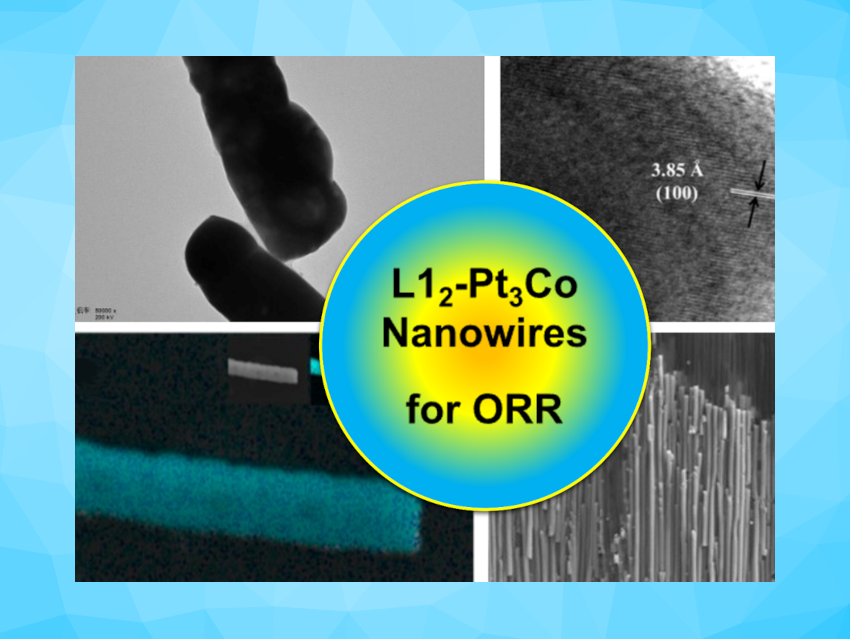The oxygen reduction reaction (ORR) transforms molecular oxygen into H2O. The hydrogen atoms necessary for the reaction can be provided using molecular hydrogen or by electrochemical means, with an electrode providing electrons and an acidic aqueous phase providing protons. The ORR is an important reaction linked to the use of green hydrogen as a fuel for the production of electricity and heat in modern fuel cells. Platinum is generally used as a heterogeneous catalyst for this reaction, despite its high costs and scarcity. Replacing platinum with alloys or other materials would be useful. A Pt3Co alloy, for example, has shown excellent ORR activity.
Yikun Su, Shenzhen University, China, and George Mason University, Fairfax, VA, USA, Kunming Gu, Shenzhen University, Mauro Fianchini, Magnetocat SL, Alicante, Spain, and colleagues have developed ordered Pt3Co nanowires with an L12 structure that have a very high ORR activity. The nanowires were synthesized using an electrochemical, diffusion-limited method to co-deposit Co and Pt atoms, followed by annealing at 650 °C. The nanowires were characterized using X-ray diffraction, magnetic hysteresis, field emission scanning electron microscopy (FE-SEM), and high-resolution transmission electron microscopy (HR-TEM). Their ORR catalytic activity was evaluated using cyclic voltammetry (CV) and linear scanning voltammetry (LSV).
The electrocatalytic activity of the ordered nanowires is superior to a commercial Pt/C catalyst as well as structurally disordered and weakly magnetic A1-Pt3Co nanowires. L12-Pt3Co nanowires also show higher intrinsic stability and robustness to the reaction conditions and a higher tolerance to poisoning by carbon monoxide. All of these properties could be valuable for a possible large-scale industrial use of the catalyst.
The team studied the mechanistic aspects of the surface reactivity of ordered L12-Pt3Co in comparison with the corresponding disordered nanowires and a commercial Pt/C catalyst. The researchers propose a mechanism that involves the formation of a hydroperoxyl (HOO*) intermediate as the rate-limiting step under electrochemical conditions and its decomposition to form either H2O or H2O2 competitively. The magnetic behavior of the surface, induced by quantum spin interactions coming from the ordered cobalt atoms, weakens the chemisorption of oxygen intermediates and boosts the kinetics of the decomposition of the hydroperoxyl intermediate.
- Ferromagnetic L12‐Pt3Co Nanowires with Spin‐Polarized Orbitals for Fast and Selective Oxygen Reduction Electrocatalysis,
Yikun Su, Zhaoyang Wang, Ruoxi Gao, Qifan Wu, Jinlai Zhao, Guangming Zhu, Qiliang Li, Hongbin Xu, Yiye Pan, Kunming Gu, Chiara Biz, Mauro Fianchini, Jose Gracia,
Adv. Funct. Mater. 2023.
https://doi.org/10.1002/adfm.202311618



